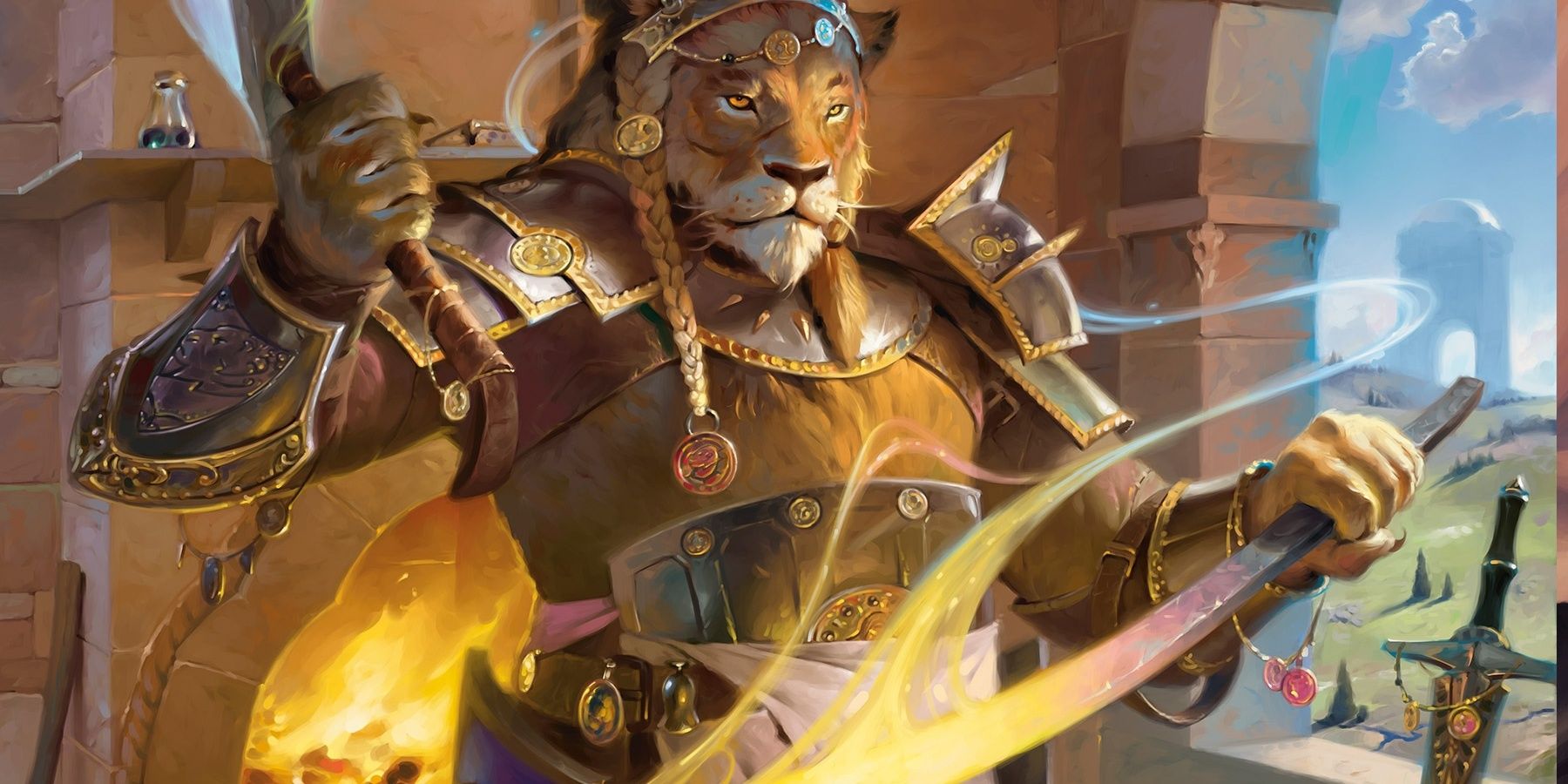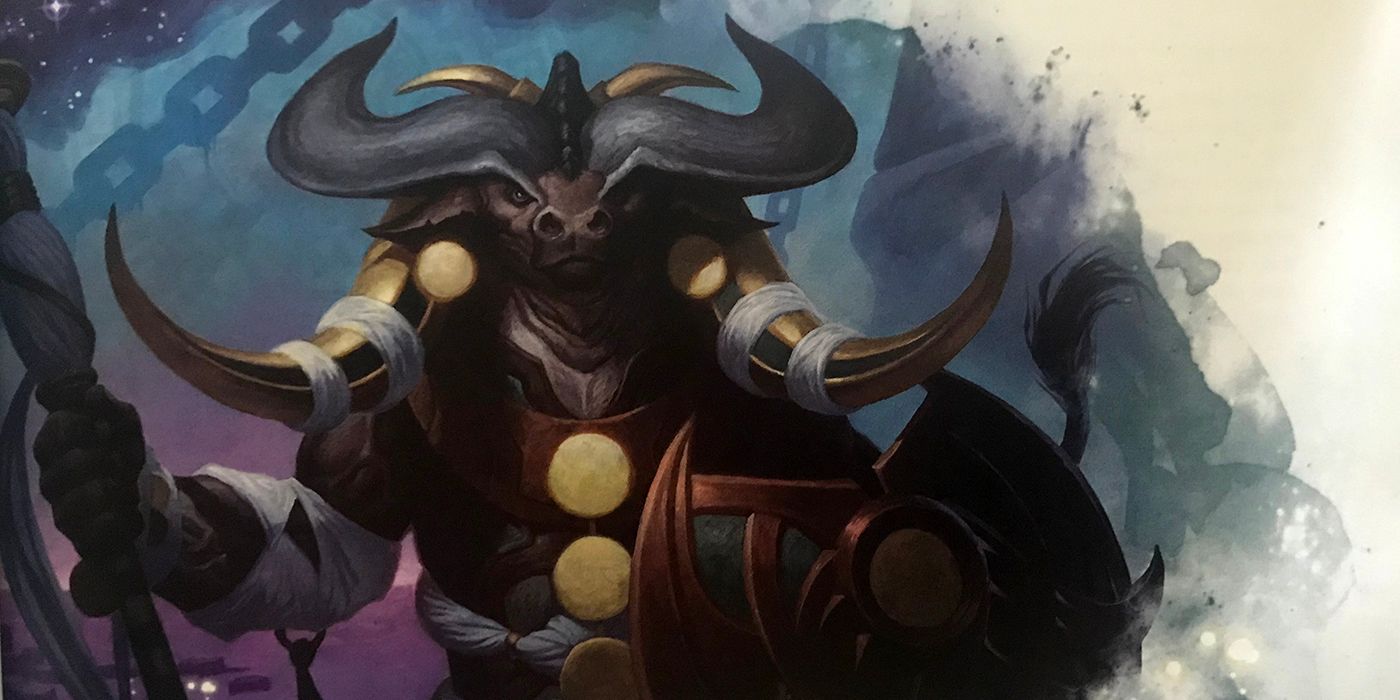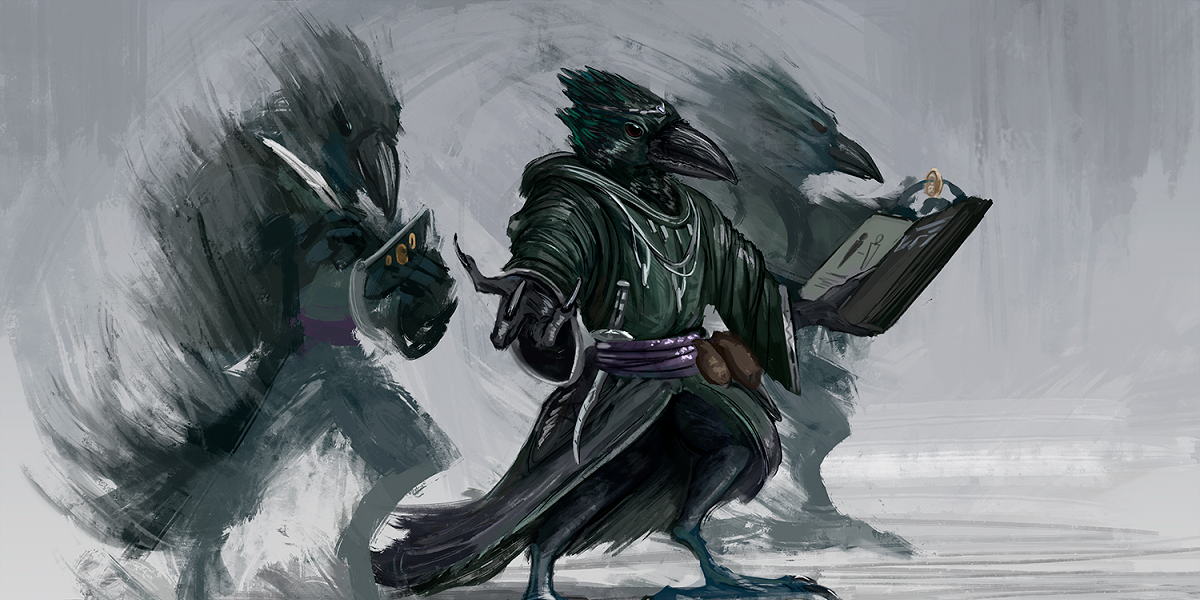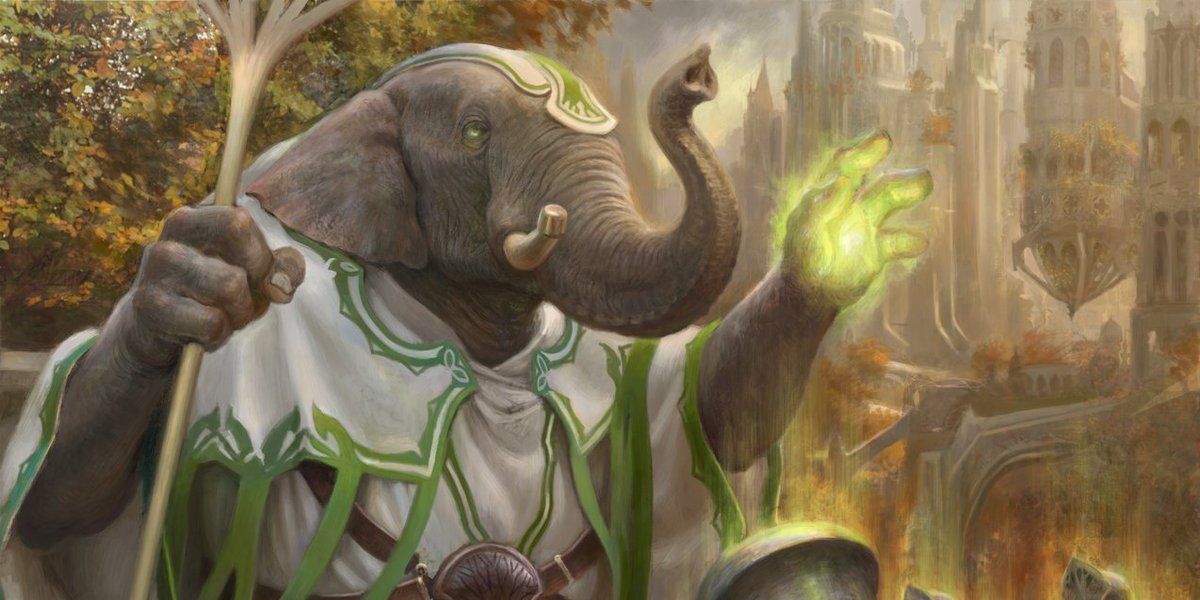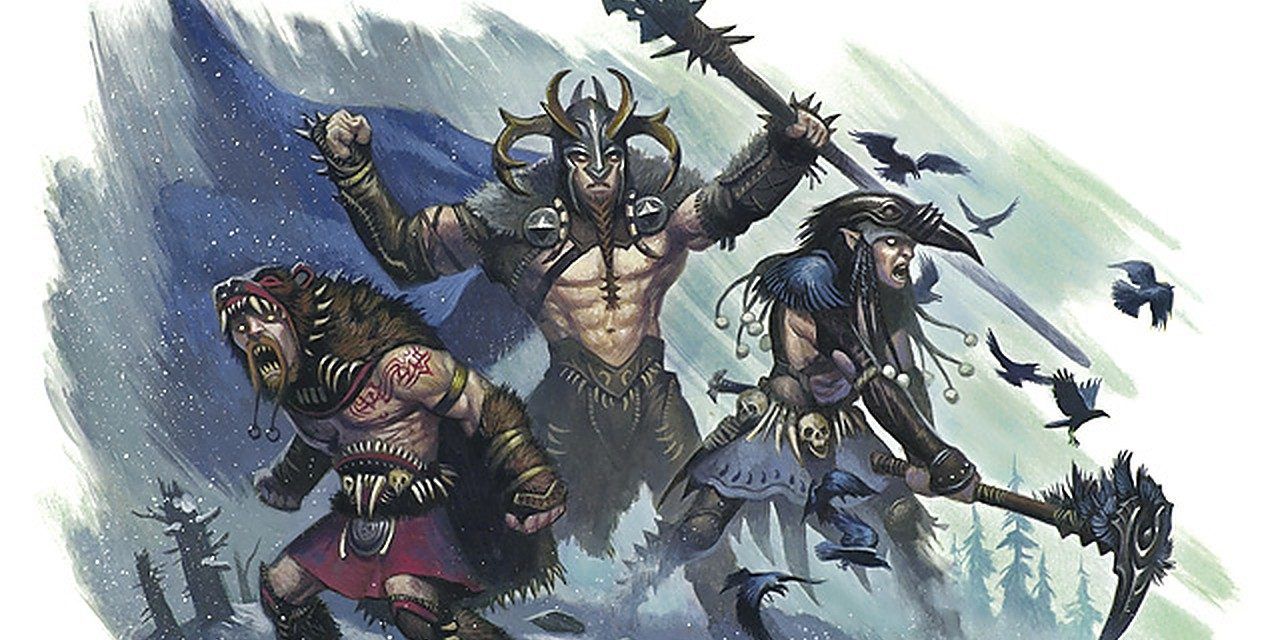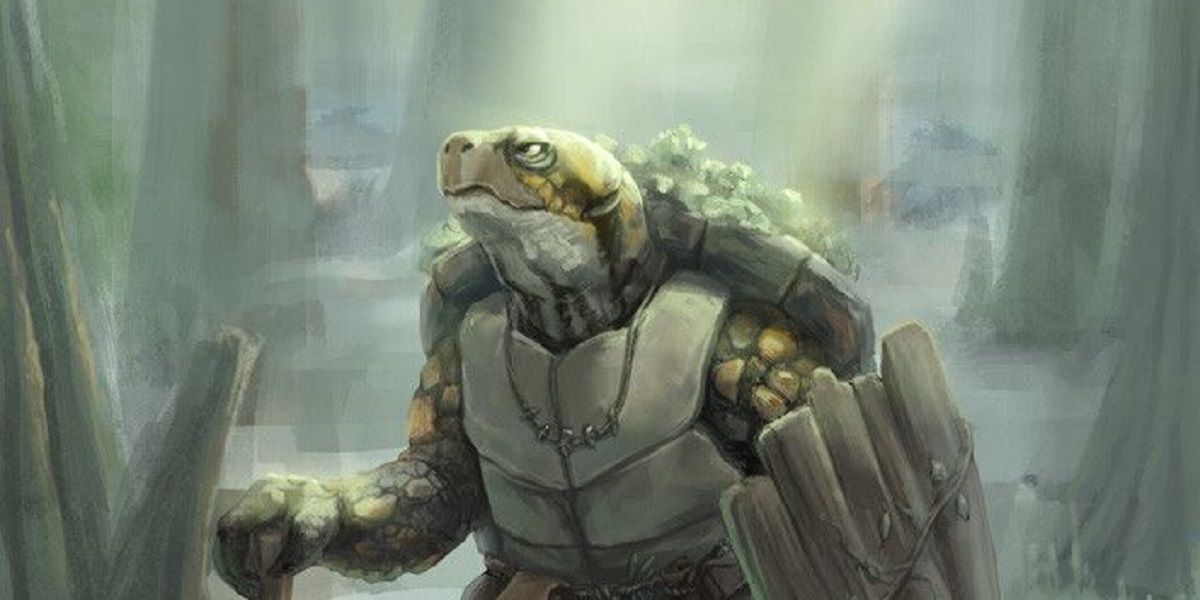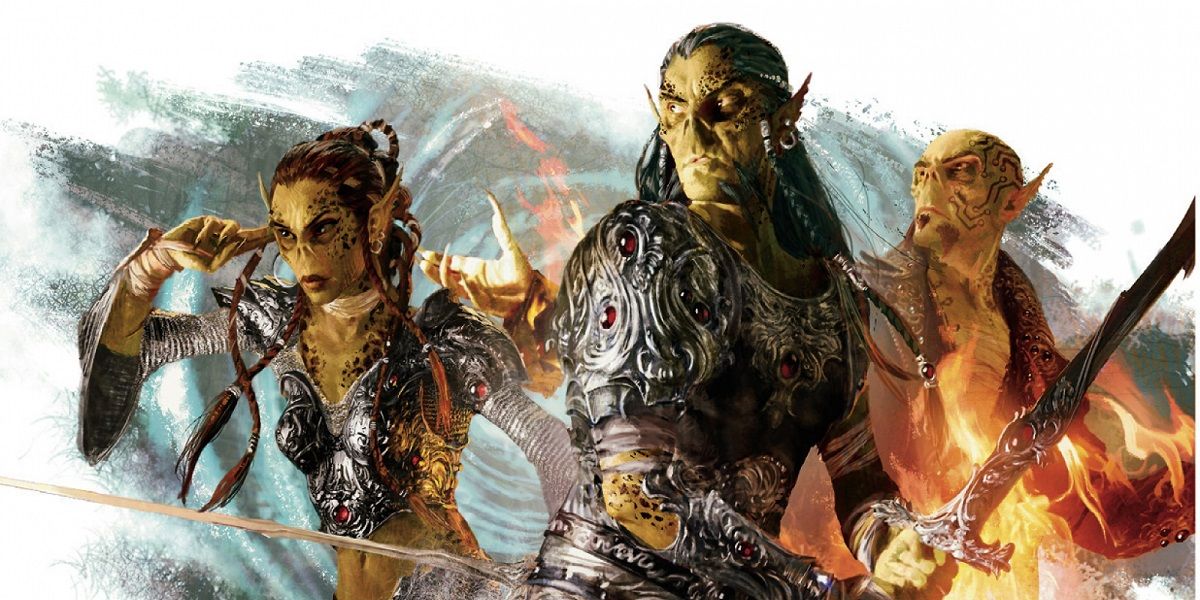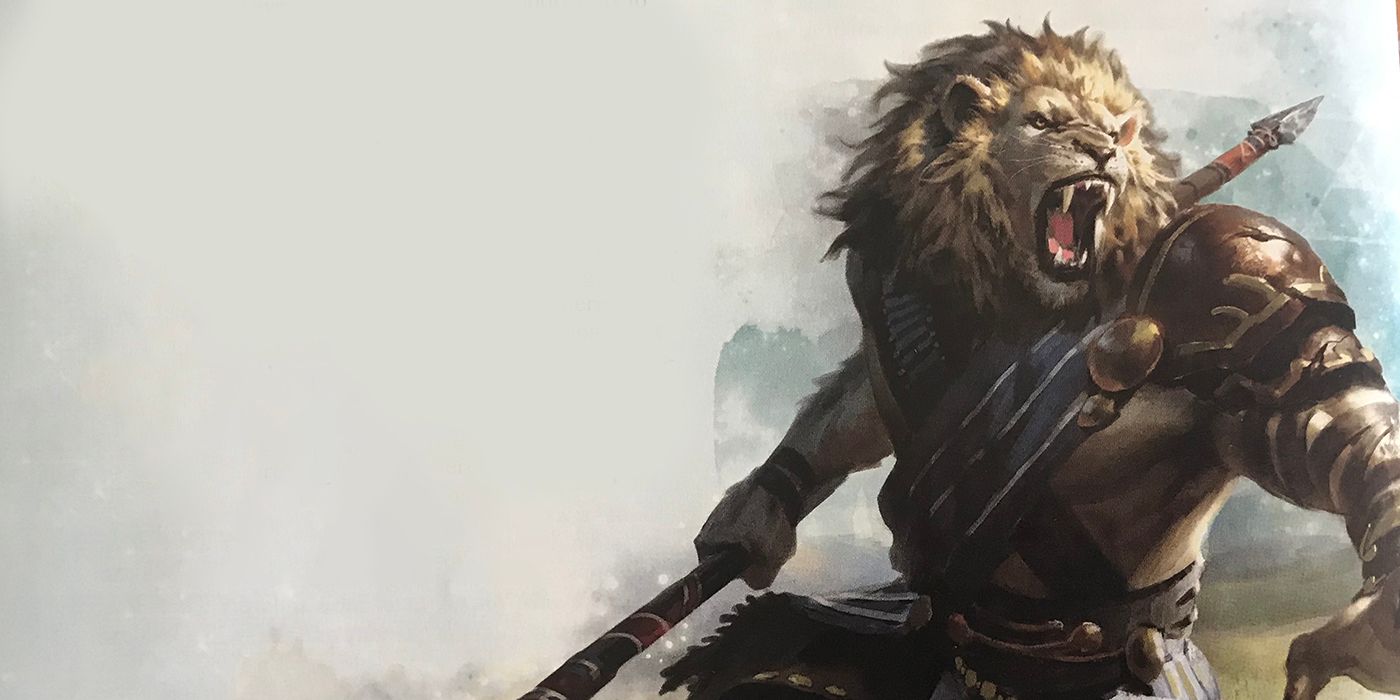In Dungeons & Dragons, you can play as any number of creatures, but many players stop at humans, elves and half-elves. While many players see the core races and stop there -- edging toward more human than not -- there remain a plethora of monster races to enjoy and play. However, many of these go unexplored. Even among monster races, there are some races that players use less often.
These races have a lot of potential for character creation. For the sake of specificity, these are races you can play in 5e through official material and aren't in homebrews or prior content. However, all of them have two things in common: people tend not to play them, and there is a vast amount of potential within them.
Minotaur
The Minotaur might be one of the most iconic monsters in the world of fantasy and mythology, but few players take the risk to play such a mighty beast. Minotaurs are broad, towering creatures with incredible strength. When you play a Minotaur, you get a +2 to Strength and a +1 to Constitution. You also gain proficiency in intimidation or persuasion, being a rather terrifying creature. One of the best features are your horns, which function as natural weapons. With the Goring Rush ability, you can charge straight into the fray and impale a target on your horns. In addition, when attacking, you can use your Hammering Horns to take an additional attack, knocking targets down by slamming your horns against them.
Minotaurs, however, are far from just brutal monsters. Many are lawful by nature, which means, surprisingly, Minotaurs make for some good Paladins. They also, obviously, make for some good Barbarians, Monks and Fighters. There's a lot of potential with Minotaurs. People hate and fear them, but you might be able to play that to your advantage...or fight against the stereotypes.
Kenku
Birds are often associated with fantasy, but few people have played these bird folks who, untold years prior, lost their wings and were left grounded. Playing a Kenku gives you a +2 to Dexterity and a +1 to Wisdom. You gain proficiency in either Acrobatics, Deception, Stealth or Sleight of Hand. You are an expert at mimicry and forgery -- skills your race has perfected living on the outskirts of society.
Kenku live as rogues at the edge of society, making them ideal for Rogue and Ranger classes from a roleplay standard. However, you might be playing a redemptive Kenku, trying to rise above the legacy of your ancestors. Perhaps you might use your mimicry skills as a Bard, though a dextrous fighter wielding a rapier might also suit you well.
Loxodon
Loxodon are elephant people, living to half a millennium and considered young into their 60s. For their stats, they gain a +2 to Constitution and a +1 to Wisdom. Loxodons are towering creatures, counting as one class size larger than Mediu. They can use their trunks to lift things five feet away or gain an advantage on smelling-focused perception checks. Their serenity grants them an advantage against charmed or frightened. Their naturally thick skin grants them a natural armor of 12 + their Constitution modifier.
The Loxodon are wise and ancient creatures, and their incredible strength and hide make them hard to overcome. They tend to be calm and meditative creatures, but they are one of the most dangerous classes in the game when angered. Loxodons seem perfectly suited to the Cleric or Druid classes, but a Barbarian or Paladin Loxodon might be an intense combination.
Firbolg
What happens when you cross the fey with half-giants? You get Firbolgs, nature-oriented wanderers who seem perpetually overlooked by Dungeons & Dragons players. Firbolg gets a +2 to Wisdom and a +1 to Strength. They can live to half a millennium. They're almost exclusively Neutral Good wanderers who live in harmony with nature. You gain limited strength and magical power. You can lift above your size class, cast Disguise Self or Detect Magic with Firbolg Magic, and turn invisible as a bonus action. You can also communicate with the animals around you.
Firbolgs are a blend of strength and magic, making them useful for classes that blend the two. Firbolgs work well as Clerics and Druids, but they can also make for a good Ranger. Your harmony with nature will leave you definitely wanting to have a nature focus, but you'll also stand out in a crowd. As a naturally shy race, be sure to consider that when playing your character. Typically speaking, Firbolgs aren't aggressive.
Tortle
Tortles, as the name implies, are bipedal tortoises who wander like nomads across the land, survivors in the face of all the elements. Like an inverse to Firbolgs, Tortles gain a +2 to Strength and a +1 to Wisdom. They live an average of 50 years. You have claws as a natural weapon and can hold your breath for an unusually long period of time. However, the key element to every Tortle is its shell. They gain a natural AC of 17 -- no modifier -- but cannot wear armor over it. As an action, you can withdraw into your shell, gaining 4 points to AC and advantage on Strength and Con checks, though at the cost of going prone.
Tortles are designed for defense, though their unusual set of skills make them hard for some players to utilize. Tortles might make for good Fighters or Barbarians, but they make for solid Clerics. Regardless, you'll have to consider how to incorporate defensive play into your fighting style, which might make Tortles a solid choice for a support healer who can wade into battle without fearing death.
Gith
Gith are tall, gaunt creatures who were once enslaved by a common master. However, two variants of Gith -- the warlike Githyanki and the wise Githzerai -- emerged from slavery to rise among their own ranks. Githyanki gain a +2 to Strength, while Githzerai gain a +2 to Wisdom. All Gith gain a +1 to Intelligence. Both gain psionic spells, with Gityanki gaining access to Mage Hand, Jump at third level and Misty Step at fifth, while Githzerai gain Mage Hand, Shield at third level and Detect Thoughts at fifth.
Both races are at complete odds with one another, being former slaves rising to liberation. Githyanki are inherently wicked creatures who want to dominate all they come across -- but, then again, wouldn't you if you lived in a world that hated and feared you? Githzerai are more wise and calculated, trying to bring order to an orderless world. Depending on which one you choose, you might end up a violet Warlock or a wise Wizard.
Leonin
Leonin are proud, lion-people warriors. They possess incredible power inside their bodies. As a Leonin, you gain a +2 to Constitution and a +1 to Strength. Your base speed is an increased 35 feet per turn. You can use your claws as a natural weapon and gain proficiency in either Athletics, Intimidation, Perception or Survival. You also gain the Daunting Roar ability, which allows you to frighten creatures that fail a saving throw within ten feet around you.
Leonin are mighty animals with a whole lot of pride behind them. As walking, muscular lions, they make for terrific Barbarians, Fighters and Paladins. However, the whole world is open for Leonin. Leonin are typically pretty proud of being Leonin, with little interest in people of the non-furry variety. If you're up for playing a feral, proud warrior race, why not try this creature?

